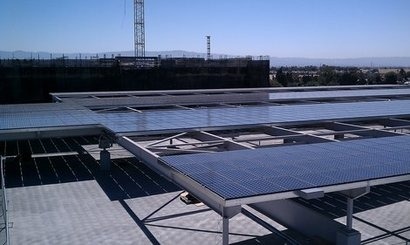
The NREL analysts used detailed light detection and ranging (LiDAR) data for 128 cities across the US, along with improved data analysis methods and simulation tools. Their analysis, regarding the technical potential for rooftop solar PV systems, found that a potential 1,118 GW of capacity could be achieved representing 1,432 terrawatt hours (TWh) of annual energy generation. This would be equivalent to 39 percent of the nation’s electricity sales.
The estimate is significantly greater than that of a previous NREL analysis carried out in 2008. Analysts attribute the new findings to increases in module power density, improved estimation of building suitability, higher estimates of the total number of buildings and improvements in PV performance simulation tools.
“This report is the culmination of a three-year research effort and represents a significant advancement in our understanding of the potential for rooftop PV to contribute to meeting U.S. electricity demand” said Robert Margolis, NREL senior energy analyst and co-author of the report.
Within the 128 cities studied, the researchers found that 83 percent of small buildings have a suitable location for PV installation, but only 26 percent of those buildings' total rooftop area is suitable for development. The sheer number of small buildings across the country make them especially suitable for solar PV deployment. The report finds that small building rooftops could accommodate up to 731 GW of PV capacity and generate 926 TWh per year of solar energy, representing 65 percent of total rooftop potential across the US. This compares with 386 GW of installed capacity and energy generation potential of 506 TWh per year for medium and large buildings.
Pieter Gagnon, an engineering analyst of solar policy and technoeconomics at NREL and lead author of the report, added that an accurate estimate of PV's technical potential is a critical input in the development of regional deployment plans and that armed with this new data, municipalities, utilities, solar energy researchers, and other stakeholders will have a much-improved starting point for PV research and policymaking, both regionally and nationwide.
The report does not consider the potential of ground-mounted PV, meaning that the actual generation potential from PV in urban areas could greatly exceed these estimates by installing systems on less suitable roof space, on canopies over open spaces such as parking areas or by integrating PV into building facades. It is also important to note that module performance is improving steadily and is expected to carry on doing so over time.
The NREL study was supported by funding from the Department's Office of Energy Efficiency and Renewable Energy in support of its SunShot Initiative. This is a collaborative national effort aiming to aggressively drive forward innovation to make solar energy fully cost-competitive with fossil fuels and nuclear before the end of the decade.
For additional information:

